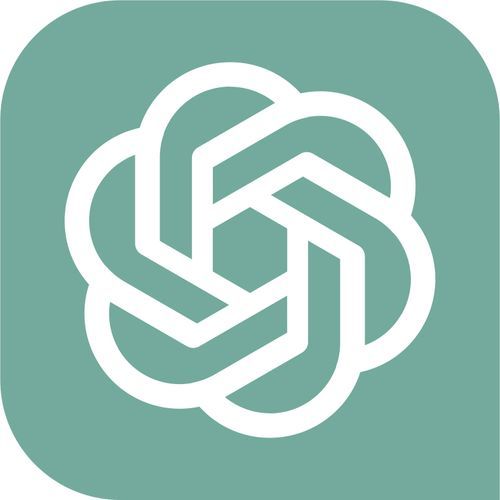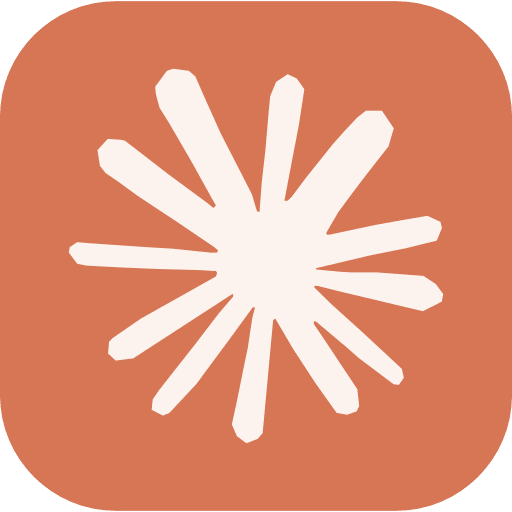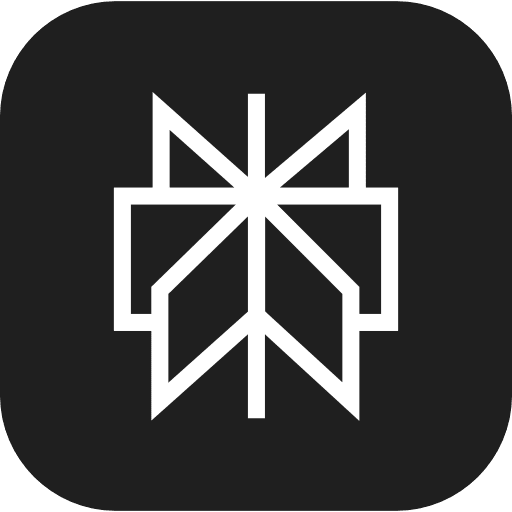Library of teambuilding games & icebreakers


Most likely to
Here’s an ice-breaking, energizing, and entertaining game that’s great for small teams of people who know each other already. Expect it to open up funny conversations and help everyone learn more about their colleagues in the process.
Most likely to
Here’s an ice-breaking, energizing, and entertaining game that’s great for small teams of people who know each other already. Expect it to open up funny conversations and help everyone learn more about their colleagues in the process.
How to play Most likely to
Super simple, you play in a circle and take turns asking “who is most likely to”, followed by a specific trait or activity. For instance, Sally might ask the group:
- “Who’s most likely to bungee jump off a bridge?” Or
- “Who’s most likely to play a prank on the boss?” Or
- “Who’s most likely to be a night owl?”
Each team member then votes for whoever they think is most likely to do that activity or possess the trait. To spice things up, you could say that the participant with the most votes must perform a light-hearted punishment, such as making everyone a cup of coffee or handling the next tricky customer!
Gallery



Video


Story challenge
For the language lovers on your team, try this version of an ongoing story icebreaker. To play, each person receives a number of words (a word bank) that they can use to create a story. Then, everyone reads their piece out loud or presents it to the group. To come up with the words available for each person, you can use a random word generator online, or get creative. For example, consider instructing participants that they can only use words from the company website, or from the emails they received in their inbox yesterday.
Story challenge
How to play Story challenge
For the language lovers on your team, try this version of an ongoing story icebreaker. To play, each person receives a number of words (a word bank) that they can use to create a story. Then, everyone reads their piece out loud or presents it to the group. To come up with the words available for each person, you can use a random word generator online, or get creative. For example, consider instructing participants that they can only use words from the company website, or from the emails they received in their inbox yesterday.
Gallery



Video


Figure it out
This activity is a combination of 20 questions and various TV game shows. It involves guessing a “secret” phrase that someone has drawn. To play, choose an initial contestant. That person draws an item based on slips of paper that you previously created. They begin by drawing a number of blanks to signal the number of words in the phrase they picked. From there, the other people present can ask yes or no questions. If someone guesses a word that appears in the secret phrase, the player writes the word in the blank. At any time, the other participants can guess the phrase. This game requires a bit of preparation. You’ll need to come up with as many “secret phrases” as there are people present, and also have large pieces of paper and a marker to keep track of the number of words for each round.
Figure it out
How to play Figure it out
This activity is a combination of 20 questions and various TV game shows. It involves guessing a “secret” phrase that someone has drawn. To play, choose an initial contestant. That person draws an item based on slips of paper that you previously created. They begin by drawing a number of blanks to signal the number of words in the phrase they picked. From there, the other people present can ask yes or no questions. If someone guesses a word that appears in the secret phrase, the player writes the word in the blank. At any time, the other participants can guess the phrase. This game requires a bit of preparation. You’ll need to come up with as many “secret phrases” as there are people present, and also have large pieces of paper and a marker to keep track of the number of words for each round.
Gallery



Video


ABC game
Did you ever play this game on roadtrips as a kid? Capture some of that magic by playing it with your work pals. You can actually play this game anywhere, which makes it perfect for an office or conference room event.
ABC game
Did you ever play this game on roadtrips as a kid? Capture some of that magic by playing it with your work pals. You can actually play this game anywhere, which makes it perfect for an office or conference room event.
How to play ABC game
However, since the game uses letters, you will need to make sure there are sufficient posters, papers, or other documentation around. To play, split the group into two or more teams.
The groups should have even numbers and also be relatively small - bigger groups make the game too easy and then it ends faster. Instruct every team to go around the space and find items that begin with the letters A - Z. For example, for “A”, someone might find a desk plate for “Adam”, for “B”, someone might see a “Suite B” sign, and for “C”, someone might find a paper that says “checklist” on it. The first team to run through the entire alphabet wins.
Gallery



Video


Direction direction
Think you’re good at following directions? This game will test how good you are, testing your communication skills, so you follow the right directions.
Direction direction
Think you’re good at following directions? This game will test how good you are, testing your communication skills, so you follow the right directions.
How to play:
Pick one person from your team who will pick a game or activity that is complex or hard to follow. After reading the directions out loud to the rest of the group, everyone else will attempt to play the game only based on what the speaker has told them. They will have to work together and communicate to figure out how to play correctly.
Afterward, the leader and team can briefly discuss where there were any communication breakdowns and what could have been improved.
Materials you’ll need: A game with complex directions
How many people: Small to mid-sized teams (8-16 people)
Gallery



Video


Compiling mission statement
A group mission statement is a hands-on way to get people working together toward a common goal. If your group is more than 10, break it into even smaller groups of 3-4 for this work. Then, have everyone work together to come up with a mission statement for either the company as a whole, an important initiative being worked on, or for the immediate retreat or working session. Teams can start by brainstorming and then narrowing down statements into a single written paragraph that they present out loud to the larger group. It’s a great way to kick off the session with high energy and cooperation.
Compiling mission statement
How to play Compiling mission statement
A group mission statement is a hands-on way to get people working together toward a common goal. If your group is more than 10, break it into even smaller groups of 3-4 for this work. Then, have everyone work together to come up with a mission statement for either the company as a whole, an important initiative being worked on, or for the immediate retreat or working session. Teams can start by brainstorming and then narrowing down statements into a single written paragraph that they present out loud to the larger group. It’s a great way to kick off the session with high energy and cooperation.
Gallery



Video


Typing speed race
You would be surprised how competitive colleagues become over a typing speed race. This game is a great way to kick off the fun. The best way to play the game is for the competitors to take turns completing a typing test and sharing their screen as they do so. This way, spectators can cheer them on as they type.
Typing speed race
You would be surprised how competitive colleagues become over a typing speed race. This game is a great way to kick off the fun.
How to play typing speed race
The best way to play the game is for the competitors to take turns completing a typing test and sharing their screen as they do so. This way, spectators can cheer them on as they type.
Once they’ve completed the test, their scores are entered into a league table. Fancy upping the stakes? Encourage the team to ‘place bets’ on who they think will be the fastest before starting the competition.
Gallery



Video


Jenga unstack
Try a condensed take on the popular game Jenga. Start by building the tower according to game instructions. Then see who can remove the most pieces in one minute without knocking everything down. You can do this as a large group and simply set the timer for a minute and see how far you can get, or you can have a Jenga tower prepared for smaller groups or pairs and have them compete to see who can remove the most. Either way, watch out for the falling pieces!
Jenga unstack
How to play Jenga unstack
Try a condensed take on the popular game Jenga. Start by building the tower according to game instructions. Then see who can remove the most pieces in one minute without knocking everything down. You can do this as a large group and simply set the timer for a minute and see how far you can get, or you can have a Jenga tower prepared for smaller groups or pairs and have them compete to see who can remove the most. Either way, watch out for the falling pieces!
Gallery



Video


Office Jenga with a twist
It’s just like Giant Jenga, but with each block having a fun little challenge written on it—like balancing the piece on your head or doing a dance before placing it.For the hybrid version, the in-office team plays with the physical Jenga set, while remote workers jump in by picking the challenges for their in-office teammates. For example, as the in-office group pulls a block, a remote teammate gives them a challenge to complete before placing the block back on the tower. Remote players can also participate by tracking the game and offering ideas for wacky tasks. It’s a great way to include everyone and keep the laughs going, no matter where people are.
Office Jenga with a twist
Explanation:
It’s just like Giant Jenga, but with each block having a fun little challenge written on it—like balancing the piece on your head or doing a dance before placing it.
For the hybrid version, the in-office team plays with the physical Jenga set, while remote workers jump in by picking the challenges for their in-office teammates. For example, as the in-office group pulls a block, a remote teammate gives them a challenge to complete before placing the block back on the tower. Remote players can also participate by tracking the game and offering ideas for wacky tasks. It’s a great way to include everyone and keep the laughs going, no matter where people are.
Gallery



Video


Who am I? Game
One person writes a name on a piece of paper and sticks it on another person's forehead. They must ask yes or no questions to figure out who they are. If you have ever played the game 20 questions (or the fun iPhone game of Heads Up) then you’re familiar with the premise.
Who am I? Game
How to play Who am I? Game
One person writes a name on a piece of paper and sticks it on another person's forehead. They must ask yes or no questions to figure out who they are. If you have ever played the game 20 questions (or the fun iPhone game of Heads Up) then you’re familiar with the premise.
Gallery



Video


Company quiz
Who knows the most about your organization? Come up with a quiz to find out. Put together a fun list of questions based on company mission, values, history, and staff. Grade the quizzes and the employee with the highest score wins. If you want to up the ante, have every team member write a question about themselves to incorporate into the quiz. Have them make it as challenging as possible!
Company quiz
How to host Company quiz
Who knows the most about your organization? Come up with a quiz to find out. Put together a fun list of questions based on company mission, values, history, and staff. Grade the quizzes and the employee with the highest score wins. If you want to up the ante, have every team member write a question about themselves to incorporate into the quiz. Have them make it as challenging as possible!
Gallery



Video


Air balloons
Air balloons is an energetic team-building game that encourages teamwork. It’s a fantastic way to build energy in the room and loosen everybody up for the coming activities.To play air balloons, you’ll need at least one balloon for each team, a paper or plastic fan or a sheet that’s capable of wafting air and a stopwatch. This game is best played with groups of at least 8+ players.Once the groups have been organised and handed the necessary materials, one person from each group must be designated as the timekeeper and is handed the stopwatch. When the timer starts, the timekeeper from each team tosses their balloon into the air and it’s now the task of the other players to keep their balloon from touching the floor for as long as possible.But there’s a catch. Players are NOT allowed to touch the ball at any time. Players can only use air to keep the ball afloat. This means they can either waft the balloon or blow at it with their mouths. The moment a team’s balloon touches the floor, the timekeeper stops the watch and makes a note of the time. The team that managed to keep the balloon in the air for the longest is the winner.
Air balloons
How to play Air balloons
Air balloons is an energetic team-building game that encourages teamwork. It’s a fantastic way to build energy in the room and loosen everybody up for the coming activities.
To play air balloons, you’ll need at least one balloon for each team, a paper or plastic fan or a sheet that’s capable of wafting air and a stopwatch. This game is best played with groups of at least 8+ players.
Once the groups have been organised and handed the necessary materials, one person from each group must be designated as the timekeeper and is handed the stopwatch. When the timer starts, the timekeeper from each team tosses their balloon into the air and it’s now the task of the other players to keep their balloon from touching the floor for as long as possible.
But there’s a catch. Players are NOT allowed to touch the ball at any time. Players can only use air to keep the ball afloat. This means they can either waft the balloon or blow at it with their mouths. The moment a team’s balloon touches the floor, the timekeeper stops the watch and makes a note of the time. The team that managed to keep the balloon in the air for the longest is the winner.
Gallery



Video


Group exercise
Some of the best energizers are also the simplest. Case in point? Exercise. Well-known to perk you up, improve your mood, and make you feel more alert, getting the body moving can work wonders in the workplace.
Group exercise
Some of the best energizers are also the simplest. Case in point? Exercise. Well-known to perk you up, improve your mood, and make you feel more alert, getting the body moving can work wonders in the workplace. There are all sorts of ways to use exercise to your advantage too.
How to do group exercise
- Go for a short walk as a team each afternoon
- Encourage everyone to do some simple stretches/exercises at their desk
- Go into the hallway and run relay races together
- Clear a space and run around the office for 5 minutes, dropping to the floor to do certain exercises (e.g. push-ups, squats, or burpees) every 20 seconds
However you incorporate exercise into the workday, it’s almost guaranteed to have positive effects on people’s energy levels. Stress relief, improved physical health, and stronger social ties are a few other benefits to look forward to.
Gallery



Video


“MacGyver” challenge
MacGyver is an older television program where the hero escaped sticky situations by improvising tools made of unlikely materials. You can recreate this set-up in your event space or office. To play, challenge participants to use 3-5 items to reach a desired end result. For example, something like “a way to pick the door lock” or “escape vehicle” are fun options. You can either set out some various equipment, or have people collect their own based on what they can find around the office. Note: if you are doing this in a conference room or other rented space, it makes sense to have a table set up with random odds and ends for people to pick from.
“MacGyver” challenge
How to play “MacGyver” challenge
MacGyver is an older television program where the hero escaped sticky situations by improvising tools made of unlikely materials. You can recreate this set-up in your event space or office. To play, challenge participants to use 3-5 items to reach a desired end result. For example, something like “a way to pick the door lock” or “escape vehicle” are fun options. You can either set out some various equipment, or have people collect their own based on what they can find around the office. Note: if you are doing this in a conference room or other rented space, it makes sense to have a table set up with random odds and ends for people to pick from.
Gallery



Video


Respect boundaries
Think of it as a personal space bubble. Respecting boundaries shows you care about colleagues' comfort and that respect creates a smoother vibe in the office. Respect boundaries activity - "Personal preferences" icebreaker: Prepare a list of thought-provoking questions related to work habits, communication styles and personal preferences. Gather colleagues in a relaxed setting and facilitate a group discussion by asking the questions. Participants take turns sharing their responses, providing insights into their preferences and boundaries. Encourage colleagues to actively listen and engage in discussions to better understand each other's perspectives. This icebreaker activity promotes open conversations about boundaries and encourages mutual respect.
Respect boundaries
Think of it as a personal space bubble. Respecting boundaries shows you care about colleagues' comfort and that respect creates a smoother vibe in the office.
Respect boundaries activity - "Personal preferences" icebreaker:
- Prepare a list of thought-provoking questions related to work habits, communication styles and personal preferences.
- Gather colleagues in a relaxed setting and facilitate a group discussion by asking the questions.
- Participants take turns sharing their responses, providing insights into their preferences and boundaries.
- Encourage colleagues to actively listen and engage in discussions to better understand each other's perspectives.
This icebreaker activity promotes open conversations about boundaries and encourages mutual respect.
Gallery



Video


Stranger conversation practice
Boost team confidence by practicing talking to people you don’t know well. Pair people up in groups of two and then give them a few prompts. Their objective is to learn this information from each other using a natural dialogue. For example, maybe the goal is to learn about their favorite international cuisine, or their favorite place to vacation. It’s great practice for having an objective in mind and then being creative about how to get there.
Stranger conversation practice
How to play Stranger conversation practice
Boost team confidence by practicing talking to people you don’t know well. Pair people up in groups of two and then give them a few prompts. Their objective is to learn this information from each other using a natural dialogue. For example, maybe the goal is to learn about their favorite international cuisine, or their favorite place to vacation. It’s great practice for having an objective in mind and then being creative about how to get there.
Gallery



Video


Agile mind mapping
Our final activity can be best applied by taking what you’ve learned from our other games and applying the lessons to a real-world setting, including your current projects. It involves iterative development and working with your remote staff to create a group consensus that optimizes results.
Agile mind mapping
Our final activity can be best applied by taking what you’ve learned from our other games and applying the lessons to a real-world setting, including your current projects. It involves iterative development and working with your remote staff to create a group consensus that optimizes results.
Set up:
To create an agile mind map, use an online whiteboard, like Miro or MindMeister. Use your central theme or challenge. Let everyone collaboratively create branches of ideas or suggestions on the main topic. Review the map after gathering your input, group similar ideas, and prioritize the final items together.
An example might be improving your onboarding process. Together in a virtual setting, your remote workers add insights and areas for improvement in onboarding, such as setting clear expectations, first-week check-ins, and onboarding buddies. Agile mind mapping can be an extremely valuable.
Gallery



Video


Ping Pong Tournament
As open office plans became more popular, more companies started setting up breakout rooms where employees could decompress by grabbing a coffee or playing ping pong. If you already have a ping pong table in the office, this is an ideal game to add to the Office Olympic games—a ping pong competition works well with individual players and teams. While there is the classic two-person setup for table tennis, there are numerous games, like playing with two balls at a time or a group game that gets smaller as people must step out if they miss their turn to hit the ball.
Ping Pong Tournament
How to play Ping Pong Tournament
As open office plans became more popular, more companies started setting up breakout rooms where employees could decompress by grabbing a coffee or playing ping pong. If you already have a ping pong table in the office, this is an ideal game to add to the Office Olympic games—a ping pong competition works well with individual players and teams.
While there is the classic two-person setup for table tennis, there are numerous games, like playing with two balls at a time or a group game that gets smaller as people must step out if they miss their turn to hit the ball.
Gallery



Video


Online whiteboard sketching
For this activity, your employees will get to grips with an online whiteboard and practice agile communication and visualization skills. A lot of agile skills can be honed with the right visualization methods, especially down complex ideas and practices into smaller chunks.
Online whiteboard sketching
For this activity, your employees will get to grips with an online whiteboard and practice agile communication and visualization skills. A lot of agile skills can be honed with the right visualization methods, especially down complex ideas and practices into smaller chunks.
Set up:
Use an online whiteboard accessible to all (WebWhiteBoard and Miro will both do the job). You need to assign one person as the sketcher, give them a topic (like “project workflow”), and allow one minute to draw it silently. Team members guess the drawing, and then share feedback and annotations to enhance clarity and collaboration.
Gallery



Video


Scattergories
Oh, Scattergories - that hilarious game that always leaves you scratching your head and laughing until your sides hurt. But did you know that this party favorite can be used in the office setting too?
Scattergories
Oh, Scattergories - that hilarious game that always leaves you scratching your head and laughing until your sides hurt. But did you know that this party favorite can be used in the office setting too?
How to play:
- Choose a category and a letter.
- Set a time limit for players to come up with answers.
- Each player writes down as many answers as possible starting with the chosen letter.
- Compare answers and eliminate any duplicates or invalid answers.
- Award points for unique and valid answers. Repeat with a new category and letter.
Not only is Scattergories great for building team chemistry and boosting morale, but it's also a sneaky way to get everyone thinking outside the box and flexing their problem-solving muscles. So the next time you're stuck in a meeting that feels like a snooze-fest, bring out the Scattergories and watch the magic happen!
Gallery



Video


Slack talk shuffle
Slack talk shuffle uses conversation prompts in Slack to spark casual, non-work-related discussions. Whether it’s “What’s your dream vacation?” or “Best movie of all time?”, this is an easy way to keep the team connected and talking—even remotely.It’s a great way to add a little fun into your virtual workspace and build camaraderie, with minimal effort.
Slack talk shuffle
Slack talk shuffle uses conversation prompts in Slack to spark casual, non-work-related discussions. Whether it’s “What’s your dream vacation?” or “Best movie of all time?”, this is an easy way to keep the team connected and talking—even remotely.
It’s a great way to add a little fun into your virtual workspace and build camaraderie, with minimal effort.
How to play:
- Post a conversation prompt in Slack.
- Teammates respond and discuss in the thread.
- Watch the conversation flow and learn more about each other!
Gallery



Video


The Penny game
The Penny Game helps teams find the sweet spot between rhythm and balance. This simple game demonstrates how important workflow and efficiency are to agile working. You’ll need a decent-sized coin collection beforehand.
The Penny game
The Penny Game helps teams find the sweet spot between rhythm and balance. This simple game demonstrates how important workflow and efficiency are to agile working. You’ll need a decent-sized coin collection beforehand.
Set up:
Form teams of 5-6, providing each with a batch of 20 pennies. In each round, team members pass a batch, flipping each penny before passing. Reduce batch sizes each round to demonstrate smoother workflow with smaller batches. After each round, pause for feedback on speed and accuracy.
Gallery



Video


Office Escape
If you’ve ever been to a professional escape room event, you’ll know just how effective they are at improving essential skills like communication and problem-solving. With Office Escape, you can recreate the drama of an escape room experience without leaving the office!
Office Escape
If you’ve ever been to a professional escape room event, you’ll know just how effective they are at improving essential skills like communication and problem-solving. With Office Escape, you can recreate the drama of an escape room experience without leaving the office!
Great for: Problem-solving, creative thinking, communication, leadership
Duration: 1–2 hours
You’ll need: A storyline with a final objective, a series of problems and challenges
How to organise:
- Think of a final objective and then create a series of challenges and tasks that leads them towards completing it. It’s easier to think of challenges when you already have the final objective in mind.
- Plot a series of challenges that leads your employees toward the final objective. Be creative and have fun with it!
- You can further engage teams by offering a small reward for being the fastest to complete the objective.
Gallery



Video


Pinball
Pinball plays on the vulnerability people feel when they’re blindfolded to improve relationships among colleagues. After all, when your sight’s taken away, you have no choice but to rely on others for guidance!This powerful trust-building exercise takes that concept and turns it into a game.
Pinball
Pinball plays on the vulnerability people feel when they’re blindfolded to improve relationships among colleagues. After all, when your sight’s taken away, you have no choice but to rely on others for guidance!
This powerful trust-building exercise takes that concept and turns it into a game.
How to play Pinball
However, unlike the actual pinball machines that you find in old-school arcades, the “pinball” in this scenario is one of your employees…
Wearing a blindfold, they stand in the middle of a circle formed by the rest of the team, getting pushed gently from one person to the other. Whenever they reach someone at the edge of the circle, that individual spins them around and nudges them back across to the other side.
It might sound easy, but the combination of being dizzy and blind puts you in a bizarre and helpless position. It forces you to trust your teammates – to put your fate in their hands. This naturally makes you feel closer to them.
There’s no time limit on this activity. It ends whenever everyone has had a go at being blindfolded!
What you need:
- A blindfold
Gallery



Video

















